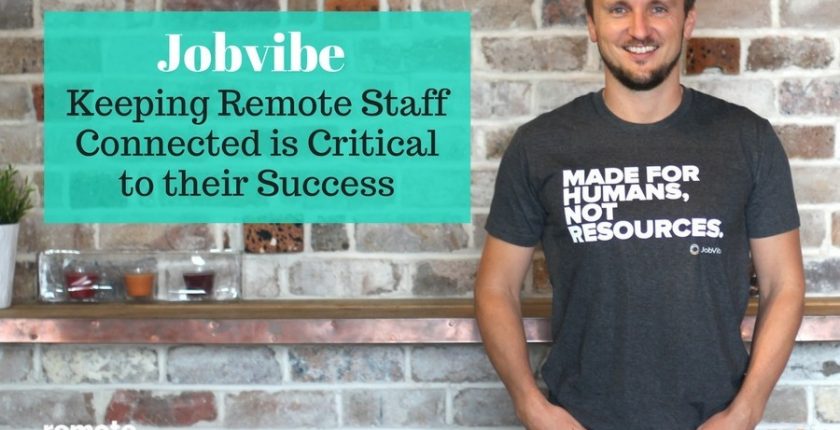
Sending LinkedIn Invitations: How to Avoid Looking Foolish
One of the most common questions regarding LinkedIn concerns invites. What is the etiquette for invites? Do you reach out to anyone and everyone, or only to those you know?
Everyone is on LinkedIn these days. With over 500 million professionals using the platform, there is virtually no limit to the vast networking opportunities that are available. For remote workers, LinkedIn continues to dominate as one of the best available resources for establishing broad industry connections and scouting for positions of interest.
It’s no wonder then that many career-minded professionals like you want to learn how to navigate the network in the best possible way.
And if you do reach out to people you’ve never met, how do you ensure your invitation is accepted? As a remote worker, you’ll likely be doing this more often than the average job seeker.
You’ve probably heard that networking is an art, not a science. And networking on-line is really no different. There are no hard and fast rules. However, there are guidelines that can help position you for success.
Here are 5 things to keep in mind so you avoid looking foolish when you request to connect with someone on LinkedIn:
1. Make sure your profile is complete
When you go to your profile on LinkedIn, you can sometimes see a message at the top letting you know that your profile can be strengthened. When you have not filled out significant portions of your profile, you will be warned that your profile is incomplete.
Do not ignore this message. There is a reason why LinkedIn is highlighting this fact. Individuals who have taken the time to complete their profiles have vastly better chances of being discovered by recruiters and other professionals, as their profile gets moved to the top of the search results.
On the flip side, when you search and try to connect with others, your complete profile will tell a better story to whomever you are trying to connect with. The more information you choose to share, the better your chances of finding a match and a connection that is mutually beneficial, and for your invite to be accepted.
And if your heart is set on remote work, don’t forget to include that in your profile. Those who work remotely are typically independent self-motivated individuals who are accustomed to an ever changing landscape of work – all qualities that are attractive to recruiters, employers and other potential connections.
2. Seek out active users
Many people use LinkedIn only when job hunting. Some have vast networks that they tap only when needed, others have barely any connections. But it is those who take the time to invest in LinkedIn on a more regular basis that establish the most organic relationships on the network.
When you look to add connections, seek out those that fall into the second category. Even when you have a tenuous connection (perhaps you work in the same industry but don’t know anyone in common), you’ll have a better chance of a positive response as this person has already shown that they care about broadening their network and are proactive about maintaining it. Perhaps it’s through publishing weekly articles, or commenting on others’ posts and sharing relevant links.
Whatever their degree of participation, they are engaged, and therefore are likely to engage with you.
3. Make it personal
You’ve heard this advice over and over, but it doesn’t hurt repeating. If you are going to request a connection with someone you don’t know, don’t send a generic invite. Even a couple of lines that reference why you are interested in this person’s work can make a difference. Taking a few minutes to draft a short note communicates interest, and who doesn’t like it when others are interested in them?
Something as simple as “Hi John, I am a fellow marketer and blogger, and work for XYZ company. I’ve read the article you published last week and really agree with your take on ___. I’d love to keep in touch”, is all that is necessary. Sure, not every top contributor will accept, and you will likely have a few invites go unanswered, but you will reach your most receptive audience over time.
4. No selling!
Have an amazing product or service you have to offer? Great! Just don’t do it when first reaching out to connect. Nothing is more off-putting as someone trying to sell you something when introductions have barely been made. That’s the best way to ensure your invite will be ignored and you walk away empty handed. First rule of thumb when connecting is always to make it about them, not you!
5. Proofread before you click Send
I know you are in a rush, we all are. So much to do, so little time. We are all constantly multitasking, fielding phone calls, connecting, writing, often all at the same time. You have to do what you have to do, just don’t be that person that doesn’t proofread their LinkedIn messages before clicking send!
Nothing makes a worse impression (other than perhaps pushing a sale) than having poor grammar, misspelling someone’s name or littering your invite with one too many exclamation points.
Made an embarrassing mistake by accident? Don’t overthink it. Just send another note with a quick apology and corrected text. I promise, you won’t be judged too harshly. It might even score you some winning points.
So, are you ready to grow your network?
Putting your best foot forward when sending invites is just the tip of the iceberg, but do it right and you will be a LinkedIn networking wiz in no time!
About the Author
Natasha Kosoff is a certified career coach dedicated to helping others build fulfilling careers aligned with their true passions and strengths. She believes that all of us have unique skills and talents and the power to create and live our best professional lives.


